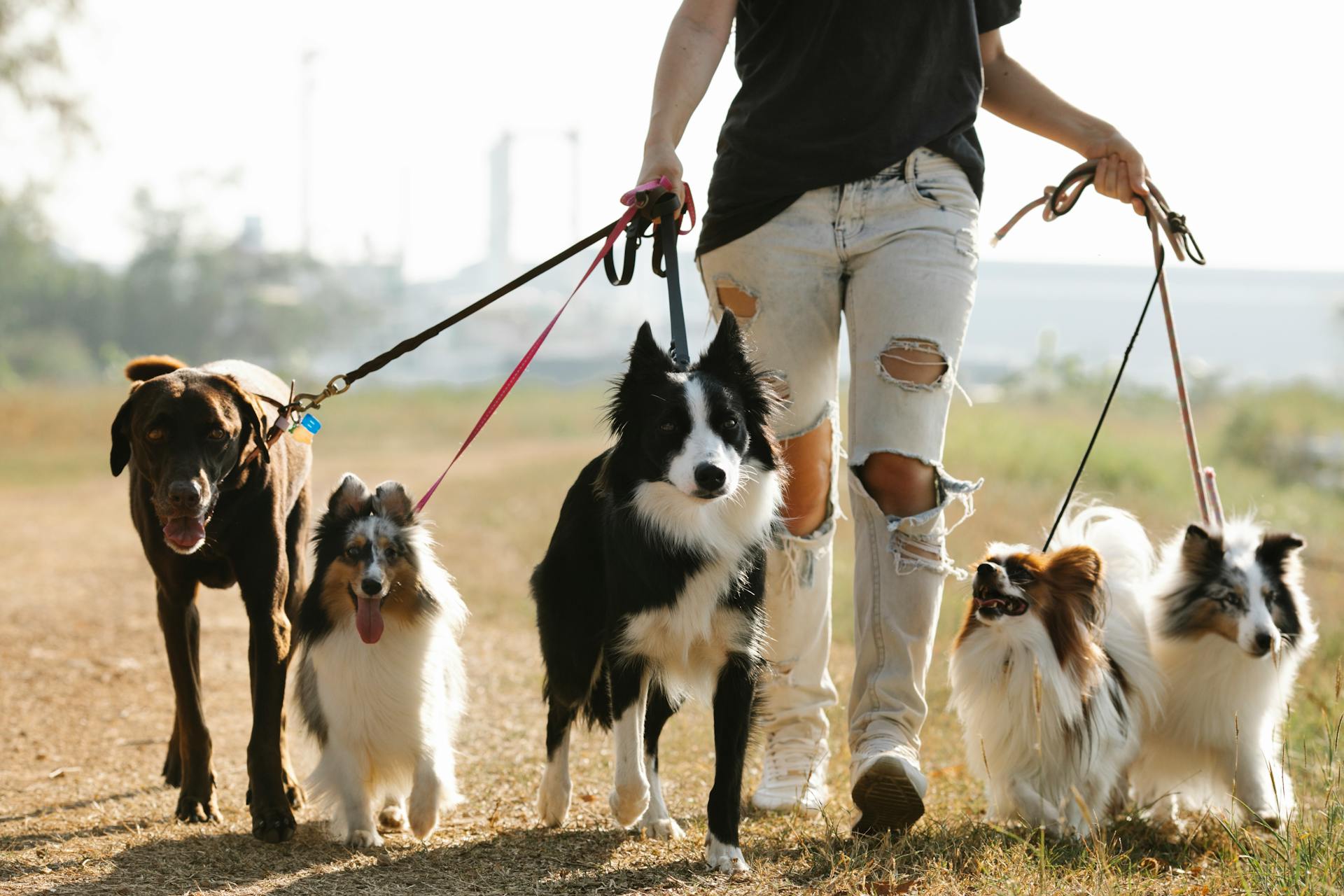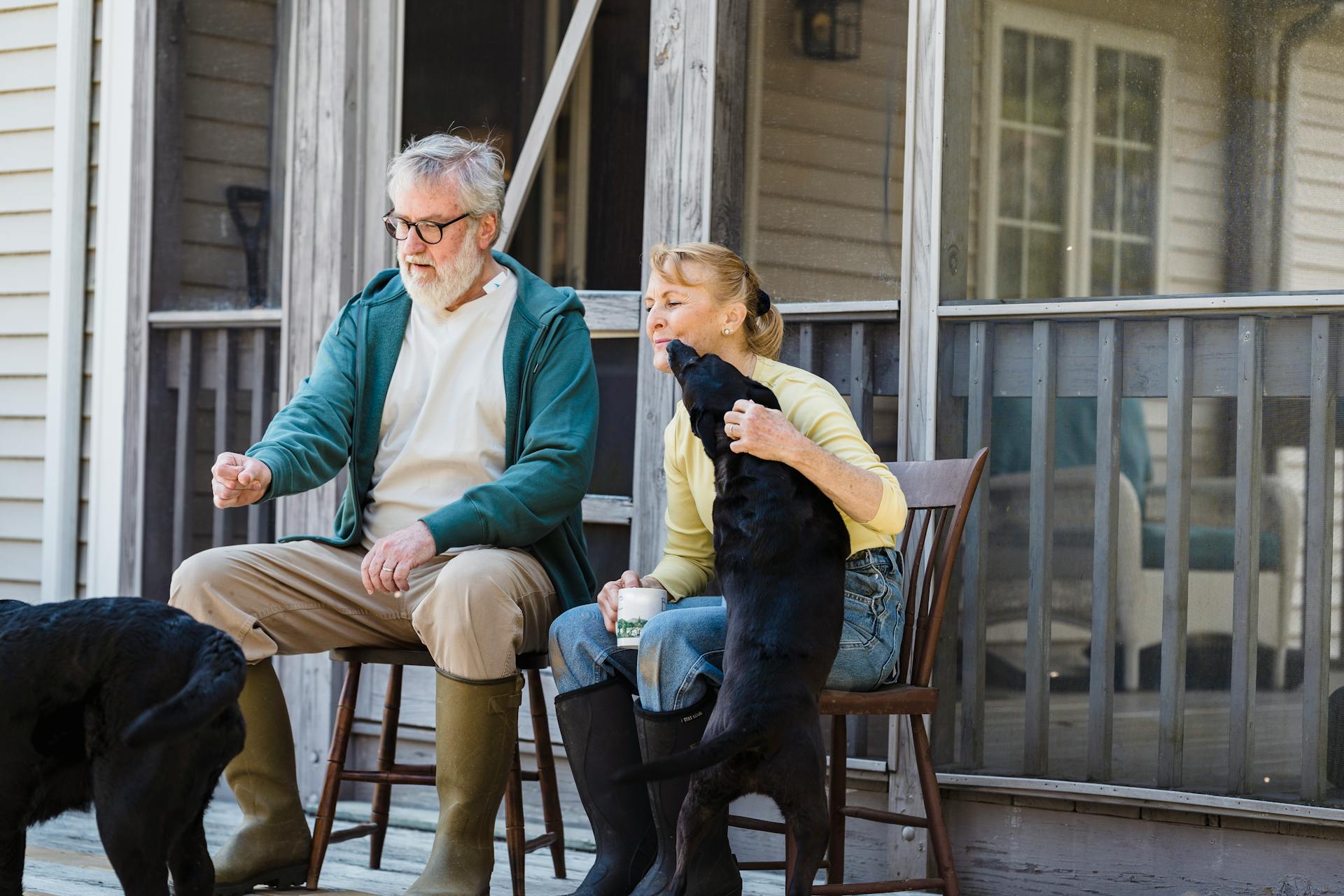
Potty training your dog doesn’t have to be a daunting task. Even the most stubborn pups can be trained as long as you follow the right guidelines. To start, create a set schedule and consistent routine so your dog knows when it’s time to eliminate in the correct place, rather than areas of your home that are not acceptable. Take them outside at times when elimination is most likely to occur, such as after meals, waking from naps or moments of high excitement.
It can also be helpful to carry treats with you on walks so you can praise your pup for properly eliminating in the correct place. If your pup does go in an unwanted spot, don't scold or punish them; instead, ignore them until they leave the area and remember to dole out treats when they do their business outside. Attempting a potty schedule too early can easily lead to frustration and confusion so wait until your pup is at least 3 months old and has developed some bladder control before expecting too much of them.
Additionally, setting up barriers such as baby gates can help prevent indoor accidents by sectioning off rooms your pet can play in while still having direct access outdoors or to designated potty spots. Using puppy pee pads inside is another technique which ingrains in their mind that indoor spots absent of grass are places meant for elimination. Reward-based training where you praise and offer treats when they get it right works really well for this process if done correctly.
Finally, don’t forget that potty training takes patience and commitment! When dealing with a more stubborn pup it may take some extra time before seeing results but rest assured persistence will pay off! It’s important not to give up; an inconsistent toilet routine leaves a confused dog who won’t learn nearly as easily as one who follows correct practices from the start!
What techniques can be used to successfully potty train a stubborn dog?
Potty training your dog can be a tricky task at times, especially with a stubborn pup. Fortunately, there are several techniques that can be used to make sure the process successfully goes off without a hitch.
To start, it’s important to remember to be patient and consistent. Training sessions should remain short and sweet, and as always be sure to reward your dog when it does something right—such as using the bathroom outside. It’s also smart to create a specific spot for your dog outside so they know exactly where they should go each time. Limiting access to certain parts of the house or crate training can absolutely help in teaching potty training basics in dogs. Additionally, familiarize yourself with the telltale signs that signify your pup needs to go outside—crying or pacing is often followed by an urge to relieve themselves in most cases.
Most importantly however, never show any type of frustration during these sessions or scold your dog heavily after it has an accident—as this may confuse them even more and discourage good habits from being formed due to its sense of failure afterwards. A firm “No” is more effective than yelling, and understanding moments of accidents do happen will go much further for successful potty training over the long-term.
How do I motivate my dog to go potty in the right place?
Do you have a mischievous pup who can’t seem to get potty training right? It can be a struggle trying to teach your pup the importance of going to the bathroom in the right spot. But with a bit of patience, consistency, and from time to time a few treats, you can train your pup to go potty in the right place.
The most important step is to select a spot outdoors that will become your pup's “potty spot” and always take them there. First thing in the morning, take your pup outside on a leash and wait for them to 'go'. Be sure to praise him or her as soon as they do anything in that area so they will start making the connection between going in that area and receiving positive reinforcement like verbal praises, pats or treats. As long as you stay consistent with this approach and avoid distractions like playing during this specific training time, he or she will soon become conditioned whenever they potty in that designated area.
When it comes time to clean up after an accident inside the house it is important not to punish your pup but instead provide positive reinforcement for using the proper potty spot outdoors. When you come upon any accidents within your home wait until after it has been cleaned up before bringing them back out on their leash so they are able to connect going potty outside with receiving rewards rather than punishment indoors.
Take these simple steps into consideration for motivating your pup and luckily no more potty-training accidents!
What methods can be used to eliminate accidents and bad habits in potty training a stubborn dog?
Potty training a stubborn dog can be one of the most challenging jobs for a pet parent. Although it is often seen as an annoying and daunting task, potty training your pup can help you create a strong bond of trust with them over time. In order to make the process easier and more successful, there are certain methods that can be used to help eliminate accidents and bad habits during potty training.
The most effective way to reduce accidents and bad habits is by ensuring that you establish a consistent routine from the very start. Taking your pup outside every two hours before they have an accident indoors is key for success in potty training. Additionally, be sure to reward good behaviour when your dog does go outdoors with praise or treats - this sends a positive signal to your pup that good behavior will result in rewards.
Many owners find it beneficial to crate train their dogs in order to discourage accidents and bad habits. Crates provide a safe space for dogs and can help them become accustomed to staying for extended periods of time without needing to go outside. Moreover, if your dog has an accident indoors, do not punish them - this will only scare them and not promote the correct behavior required for consistent success in potty training. Instead, gently direct them outside once again and try using positive reinforcement methods when they do go outside correctly.
By establishing consistent routines, rewarding good behaviour enthusiastically and using crates as needed, pet owners can help eliminate accidents and bad habits while potty training their dogs. The process may take patience but with persistent effort and following the right steps, it’s possible to potty train a stubborn dog successfully!
What tricks can I use to make potty training a stubborn dog easier?
Potty training a stubborn dog may seem like an insurmountable task. After all, it’s hard to teach such a determined animal to give up its old habits. However, with patience and some simple tricks, you can encourage your dog to become house trained in no time at all.
The first step is to create an appealing bathroom spot for your pet. Place absorbent potty pads in the area or provide grass seed or sod for the pup to use instead of the carpet. Reward him when he goes in the indicated spot and offer plenty of praise when he follows your command correctly.
It's also helpful to take your dog out immediately after meals and naps, as well as 20-30 minutes after playtime and long walks. This allows him to become familiar with specific times during which is expected to go outside for oral relief purposes. Additionally, remain consistent in other aspects as well, such as using the same phrase or command each time you have him go outside - eventually he'll make that connection!
Finally, practice great timing when it comes to disciplining your pup if needed - give him a stern yet verbal ‘no’ when you catch him urinating inside the house before completing the activity rather than afterward. With consistency, practice and positive reinforcements over time, even the most stubborn dogs can be worked with so they can learn proper potty habits quickly!
What signs indicate that my dog is ready to start potty training?
Potty training a pup or adult, rescue or otherwise can be a daunting endeavor. It takes patience, consistency, and often times may appear as an extended waiting game due to the fact that puppies don't have much control over their excretory functions at first. Fortunately, there are a few signs that tell you a pup is ready for potty training.
The first sign is usually behavioral; a puppy who can sleep throughout the night without having an accident indoors indicates that his bladder control is developing sufficiently for potty training to begin. In addition, watch for signs of restlessness like circling and sniffing around - if you notice your pup exhibiting these behavior patterns it could indicate he needs to go. Secondly, look for other cues from your dog such as being more alert and attentive while outdoors which shows they recognize they’re in the right place to relieve themselves. Lastly, pay attention to when your pup eats his meals - typically dogs will poo within 15-30 minutes of eating. If you’re able to recognize and pinpoint this new irregularity then you have reached an ideal starting point in potty training process.
Overall, with patience, consistency and close attention paid to your dog's signals, one can tell when they are ready to start potty training. Eaten meals within the 15-30 minutes of each other will represent key indicator that it's time! If you’ve had success employing these tactics, do not hesitate to share them with other pup parents who may find comfort in knowing that signs of readiness are very much attainable!
How do I stay consistent when potty training a stubborn dog?
Potty training a stubborn dog can present some unique challenges to even the most experienced pet parents. But fear not, there are plenty of strategies you can rely upon to help your pup learn where and when it's appropriate to relieve themselves.
The most important factor for creating consistency when potty training is setting up a predictable routine and sticking with it. Taking your pup out at the same times each day, such as in the morning, after meals and before bedtime, will help them get into the habit of needing to go at these specific moments. Knowing what to expect from their owner will also signal that it's time for them to do their business outdoors instead of indoors.
You should also provide positive reinforcement whenever your pup eliminates outside. Praise your dog or provide treats when they've finished going potty in an appropriate area to help reinforce that behavior. That way they won't be as tempted to have accidents in other areas as they start forming good habits.
If you find that your pup is having accidents when they haven't been exercised enough, try taking more frequent walks or playing more games with them throughout the day. This will help tire them out so that they're less likely to be antsy and more likely to have an easier time controlling themselves when it's time for their regular bathroom breaks. Just remember that consistency is key and by sticking with the same schedule day after day and using positive reinforcement, you’ll be well on your way to potty training success!
Sources
- https://www.mayoclinic.org/healthy-lifestyle/infant-and-toddler-health/in-depth/potty-training/art-20045230
- https://www.amazon.com/Squatty-Potty-Original-Bathroom-Toilet/dp/B007BISCT0
- https://www.mayoclinic.org/healthy-lifestyle/stress-management/in-depth/relaxation-technique/art-20045368
- https://www.youtube.com/watch
- https://www.amazon.com/portable-potties/s
- https://www.merriam-webster.com/thesaurus/potty
- https://www.youtube.com/watch
- https://www.verywellfamily.com/three-day-potty-training-tips-4071189
- https://www.vocabulary.com/dictionary/technique
- https://www.merriam-webster.com/thesaurus/technique
- https://www.thefreedictionary.com/potty
- https://www.thesaurus.com/browse/techniques
- https://www.merriam-webster.com/dictionary/potty
- https://www.webmd.com/digestive-disorders/squatty-potty-what-is
- https://www.merriam-webster.com/dictionary/technique
Featured Images: pexels.com


